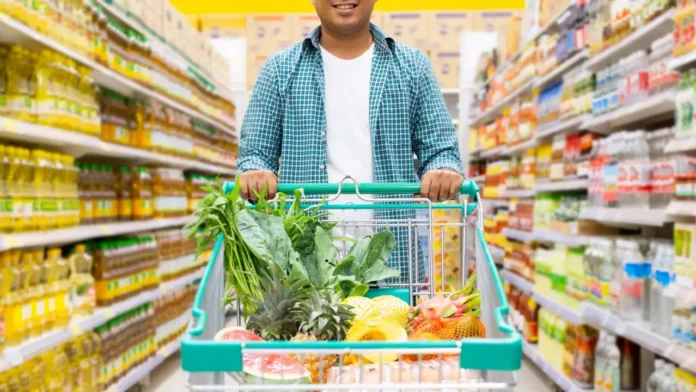Breaking its downward trajectory, retail inflation increased to a three-month peak of 5.55% in November due to strengthening food prices, particularly vegetables and cereals. However, it still falls within the Reserve Bank of India‘s acceptable range of less than 6%.
According to government data unveiled on Tuesday, the Consumer Price Index (CPI)-based inflation stood at 4.87% in October and escalated to 5.88% in November 2022.
The highest recorded inflation rate was 6.83% in August, and since that time, there has been a continuous decline in inflation.
Based on data from the National Statistical Office (NSO), inflation within the food basket rose to 8.7% in November, up from 6.61% in October and 4.67% in the corresponding month of the previous year.
The Consumer Price Index (CPI) assigns approximately 50% weightage to the food basket.
The yearly increase in prices for ‘spices’ was 21.55%, ‘pulses and products’ 20.23%, vegetables 17.7%, and fruits 10.95%. Additionally, the year-on-year inflation for ‘cereals and products’ stood at 10.27%.
Nevertheless, there was approximately a 15% decrease in retail prices of ‘oil and fats.’
Additional data indicated that inflation in rural areas reached 5.85%, while in urban centers, it stood at 5.26%, resulting in a national average of 5.55% for November.
The Reserve Bank of India has been tasked by the government to ensure retail inflation remains at 4% with a margin of 2% on either side.
In the monetary policy announced last week, the RBI projected the CPI inflation at 5.4% for 2023-24, with a reading of 5.6% in the third quarter and 5.2% in the last quarter.
Among the states, inflation was the highest in Odisha at 7.65%. Other states which witnessed inflation of more than 6% were Bihar, Gujarat, Haryana, Karnataka, Punjab, Telangana, and Rajasthan.
Delhi witnessed the lowest inflation at 3.1%.
Aditi Nayar, Chief Economist at ICRA said that the surge in food and beverages inflation to 8% in November was largely led by a sharp increase in vegetables inflation, even as seven of the 12 food sub-groups reported a moderation in their year-on-year inflation print.
She further noted the core CPI inflation eased to 4.2% in November 2023 from 4.4% in October 2023.
“This was the lowest print in the post-pandemic period. The sustained easing in the core CPI inflation is positive and has counterbalanced the menacing food inflation prints over the last few months,” Nayar said.
NSO collects the price data from selected 1,114 urban markets and 1,181 villages covering across the country on a weekly roster.
During November 2023, NSO collected prices from 99.9% of villages and 98.6% of urban markets.





